The best cameras for street photography are small and discreet, yet fast and flexible to allow you to respond to fast-moving situations. So what features are must-haves for this type of work? To some degree this depends on your photographic style and personal tastes, but there are some common specifications that are particularly suited for all styles of street photography.
We mentioned size. Many street photographers prefer a small camera body. They want to be as discreet as possible and don’t want their subjects to see their camera and stop their natural behaviour. Because of this need, many street photographers look for the best mirrorless cameras, as they have that size advantage over a DSLR.
The best cameras for street photography are also fast – both in frame rate and autofocus performance. In fast-moving situations a street photographer might want to shoot in burst mode to ensure they capture the scene. Likewise, they will want AF to lock focus quickly and track subjects accurately. This is why a powerful image processing engine is something many street photographers look for when choosing a camera.
It might sound abstract, but you’ll also want a camera that feels good. It should feel intuitive and instinctive. When shooting street photography you don’t have a lot of time to sit and scroll through menus. Many street photographers want a camera that fits their hand well and has well-positioned direct controls that they can adjust without having to stop and look down.
- Which camera settings should you use for street photography
- Street photography tips: how to photograph strangers with confidence
The best cameras for street photography you can buy today
The good news is that as the industry has started shifting to mirrorless, camera bodies have gotten smaller, faster and AF performance has improved. More cameras than ever will suit your needs as a street photographer. Below are some of our picks for the best street photography cameras based on our tests. For a deeper dive into the many different camera types and features available, check out our range of camera buying guides.
Fujifilm X-M5
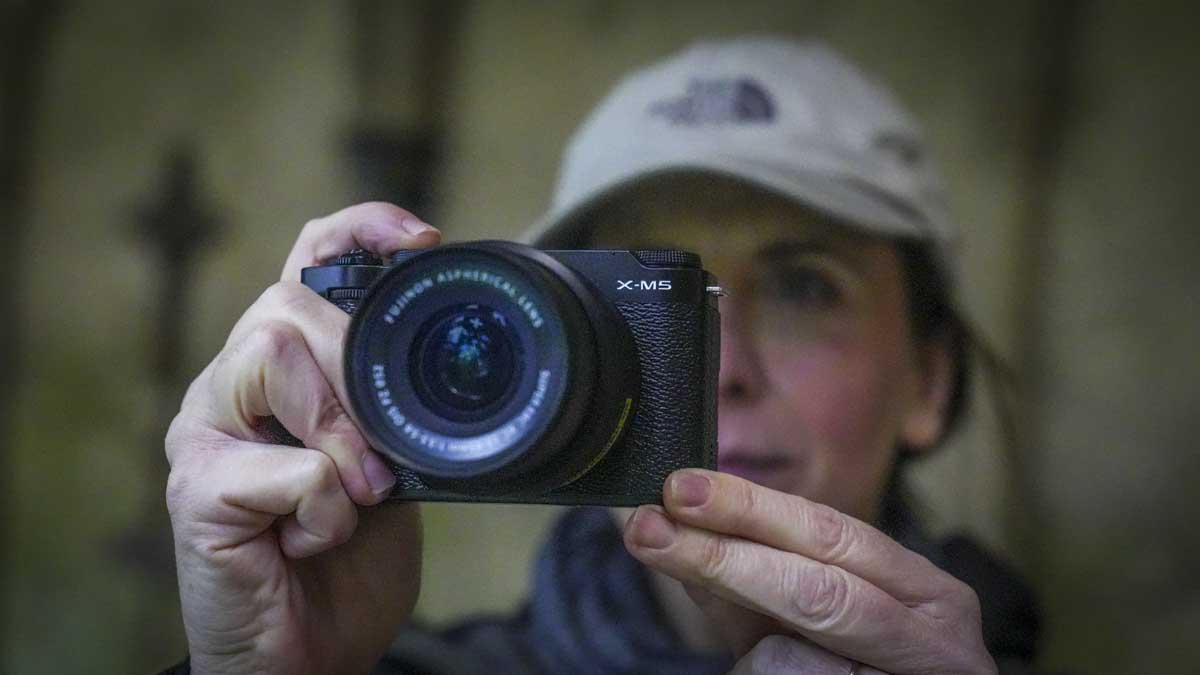
Specification
- Sensor: 26.1MP APS-C X-Trans CMOS 4 sensor
- Processor: X-Processor 5
- ISO Range: 160–12,800 (expandable to 80–51,200)
- Autofocus System: Intelligent hybrid autofocus (contrast and phase detection), Subject detection modes for animals, vehicles, and more
- Continuous Shooting: Up to 15 fps with mechanical shutter, 20 fps with electronic shutter
- Video Recording: 6.2K at 30p, 4K at 60p, Full HD at 240p for slow-motion capture
- Film Simulation Modes: 20 presets including Classic Chrome, Provia, Velvia
- Image Stabilisation: 5-axis in-body image stabilisation (IBIS) up to 7 stops
- EVF: 2.36-million-dot OLED electronic viewfinder
- LCD Screen: 3.0-inch 1.84-million-dot fully articulated touchscreen
- Weight: Approximately 355g (including battery and memory card)
- Dimensions: 123.5mm x 85.2mm x 44.5mm
£899
$899For
- Compact
- Packed with features
- Quick-access film modes
Best Fujifilm cameras for street photography
From a fixed-lens rangefinder style compact to the flagship X series camera, these are our favourite Fujifilm cameras for street photography.
Fujifilm X100V
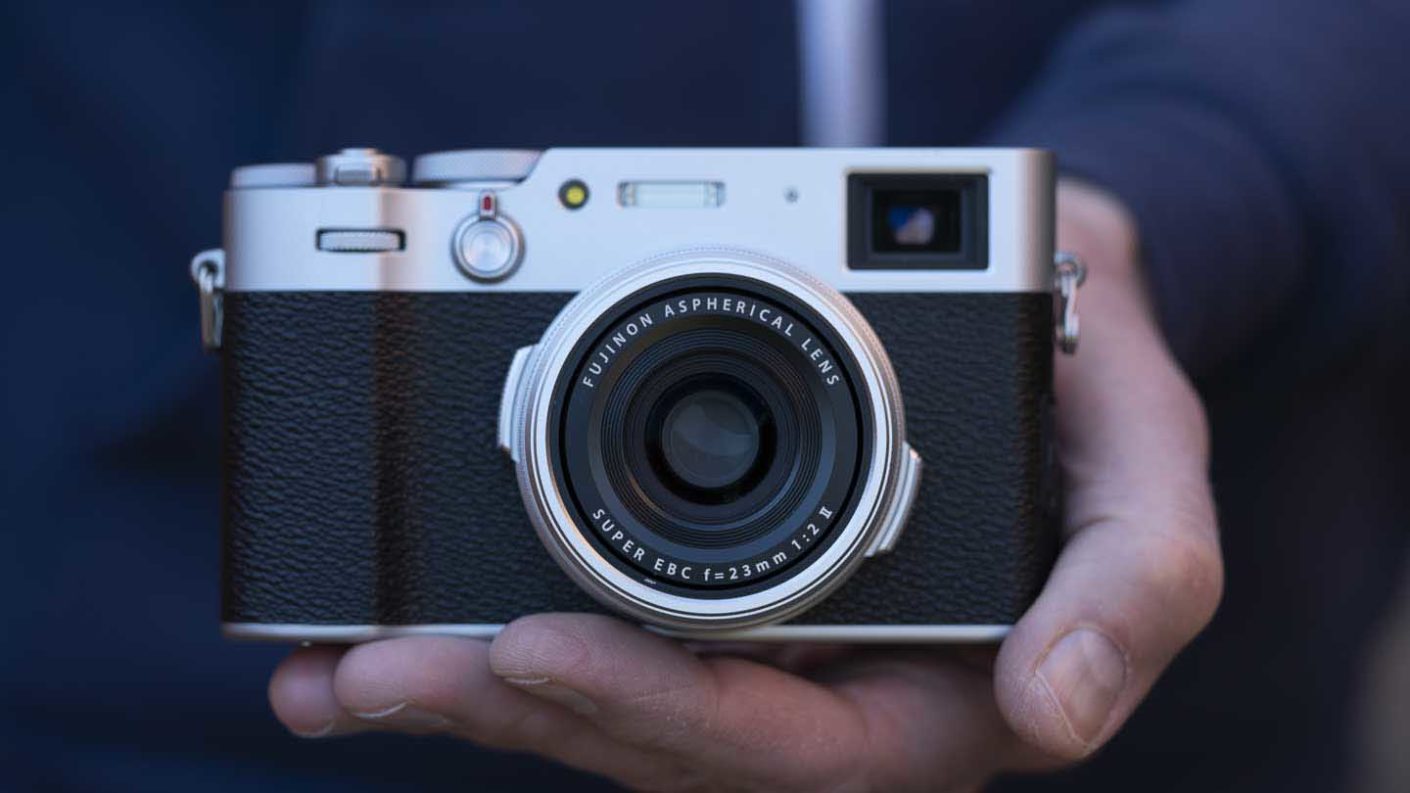
Specification
- Camera type: Compact
- Announced: 5th February 2020
- Sensor: 26.1Mp X-Trans CMOS 4 APS-C sensor
- Processing engine: X-Processor 4
- Lens: Fujinon 23mm f/2 (35mm equivalent)
- Sensitivity range: ISO 160-12,800 expandable to ISO 80-51,200
- Viewfinder: Optical: Reverse Galilean viewfinder with electronic bright frame display, 95% coverage and x0.52 magnification, Electronic: 0.5 inch 3,690,000-dot OLED with 100% coverage, 0.66x magnification
- Screen: Tilting 3.0-inch 1,620.000-dot touchscreen LCD
- Autofocus system: Intelligent hybrid with up to 425 selectable AF points
- Continuous shooting: Mechanical shutter: 11fps, Electronic shutter: 30fps with 1.25x crop
- Max video resolution: DCI 4K (4096×2160) at 29.97p/25p/24p/23.98p, 200Mbps/100Mbps, for up to 10min
- Storage: SD/SDHC/SDXC UHS-I
- Dimensions (WxHxD): 128.0 x 74.8 x 53.3mm / 5.04 × 2.94 × 2.10inch (minimum depth 32.7mm/1.29inch)
- Weight: 478g / 16.9oz including battery and SD memory card, 428g / 15.1oz body only
The fifth iteration of Fujifilm’s very popular X100 series, the X100V keeps the same high-quality feel, retro looks and traditional exposure controls that everyone loves about the X100 line. However, with the X100V the company has made the street photography camera a little more versatile and up to date with a tilting touchscreen that makes composing images and adjusting settings that bit easier.
Inside it has the same 26.1MP APS-C format sensor and processing engine as the manufacturer’s recent enthusiast-level interchangeable lens cameras, the Fujifilm X-T4, X-T3 and X-Pro3. This means that it can capture the same quality images albeit using a fixed 23mm f/2.0 lens with an effective focal length of 35mm.
The sensor is paired with the same X-Processor 4 processing engine and a bright, a new fixed Fujinon 23mm f/2 lens. This upgraded optic has a new optical construction that includes two aspherical elements in the middle to help increase resolution.
Street photographers will also love its bright, 3.69-million-dot electronic viewfinder with a maximum refresh rate of 100fps, and the upgraded tilting LCD is great for when you want to frame images more discreetly or from unusual angles.
Fujifilm has also upgraded the X100V’s AF system from the X100F. Overall, the Fujifilm X100V is every bit a premium camera and it produces superb results in a range of conditions.
£1299
$1399For
- Traditional exposure controls
- Hybrid viewfinder built-in
- Fast high-quality lens
Best Nikon cameras for street photography
Nikon’s move to the mirrorless Z system offers a number of options for street photographers, from the powerful Z6 II to the incredibly versatile Z50.
Nikon Z6 II
Specification
- Camera type: Full-frame mirrorless camera
- Announced: 14th October 2020
- Lens mount: Nikon Z
- Sensor: Full-frame (FX 35.9 x 23.9mm) 24.5MP backside illuminated (BSI) sensor
- Processing engine: Dual Expeed 6
- Stabilisation: 5-axis in-body VR
- Sensitivity: ISO 100-51,200, expandable to ISO 50-204,800
- Maximum continuous shooting rate: 14fps for up to 200Jpegs or 124 12-bit uncompressed raw files
- Autofocus system: Hybrid with phase and contrast detection
- Phase detection points: 273
- Video resolution: 4K (3840 x 2160) 30/25/24p (60P to come with free firmware update in Feb 2021), Full-HD (1920 x 1080) 120/100/60/50/30/25/24p, Slow-motion mode 1920 x 1080 30p x4/25p x4/24p x5
- Viewfinder: 0.5-inch 3.69-million-dot electronic viewfinder
- Screen: 3.2-inch 2,100,000-dot tilting touch-screen
- Storage: Dual slot 1 XQD/CFexpress and 1 SD/SDHC/SDXC
- Dimensions (W x H x D): 134 x 100.5 x 69.5mm / 5.3 x 4 x 2.8-inches
- Weight: 705g with battery and memory card but without body cap, 615g body only
While it has the same 24.5Mp backside-illuminated full-frame sensor as the original Nikon Z6, the Nikon Z6 II has two Expeed 6 processing engines instead of one. Nikon also added an SD/SDHC/SDXC (UHS-II) card slot alongside the XQD/CFexpress card slot of the original camera to address one of the concerns that many photographers raised about the original camera.
Thanks to the extra processing power, the Z6 II has a maximum continuous shooting rate of 14fps, 2 fps higher than the Z6, with full autofocus and metering capability. That rate can be maintained for 200 Jpegs or 124 uncompressed 12-Bit raw files.
Like the Z6, the Z6 II has a native sensitivity range as the Z6, ISO 100-51,200 (expandable to ISO 64-204,800) and a 273-point hybrid focusing system that covers 90% of the sensor.
However, the tracking and low-light AF performance of the Z6 II has been improved and the newer camera can focus at -6EV with an f/2 or faster lens.
In addition, the Z6 II’s human and animal eye AF operates in video mode as well as in stills mode.
You can find the Nikon Z6 II on eBay, John Lewis & Partners, Wex Photographic and Amazon UK and Amazon US.
£1999
€2262For
- High-quality sensor
- Excellent user interface and control layout
- Weatherproof build
Nikon Z50
Specification
- Camera type: Mirrorless
- Sensor: 20.88Mp APS-C / DX (23.5x15.7mm) CMOS
- Processing engine: Expeed 6
- Lens mount: Nikon Z mount
- Sensitivity range: ISO 100-51,200; expands to 204,800
- Viewfinder: 0.39-inch 2,360,000-dot OLED electronic viewfinder
- Screen: Tilting 3.2–inch 1,040,000-dot touchscreen
- Autofocus: Hybrid (phase and contrast detection) AF with 209 AF points, Eye AF and Subject Tracking. Firmware V.20 adds Eye-detection AF for Animals as well as humans
- Continuous Shooting: 11fps with continuous AF and exposure metering
- Video: 4K at 30fps and Full-HD at 120fps
- Storage: SD/SDHC/SDXC UHS-I
- Connectivity: Snapbridge 2.6; Wi-Fi, Bluetooth
- Dimensions (W x H x D): 126.5 x 93.5 x 60 mm / 5 x 3.7 x 2.4-inches
- Weight: 450g / 15.9oz with battery and memory card but without body cap, 395g /14oz body only
The Nikon Z6 and Z7 are great, but not all photographers want a full-frame camera. The Nikon Z50 offers that alternative for Nikon users wanting a mirrorless camera, and it has plenty to offer experienced photographers thanks to a solid build and a comprehensive feature set.
Its autofocus system is excellent and is capable of capturing fast-moving subjects in pin-sharp focus, even in gloomy conditions. Further good news is that the Z50 has both Subject Tracking and Eye AF modes. Eye AF is a must-have feature at the moment and it’s incredibly useful for portraits and social event photography.
Subject Tracking works in Auto-area AF mode and it’s useful for subjects that move erratically. Pressing the OK button in Auto-area AF mode activates a tracking point which is visible on the screen and in the viewfinder.
You then position this box over the subject and press the OK button again to start the tracking. As the subject moves, the Z50 tracks it around the frame, keeping it sharp in Continuous AF mode.
Inside the Nikon Z50 is a new 20.88Mp APS-C format sensor which is paired with the Expeed 6 processing engine. Together, these enable a native sensitivity range for stills of ISO 100-51,200 with expansion settings going all the way up to ISO 204,800. Meanwhile, the video range is ISO 100-25,600.
Thanks to the Expeed 6 processing engine, the Z50 can shoot at up to 11 frames per second with continuous autofocusing and exposure metering. This rate is achieved in Continuous High Plus mode while the maximum rate in Continuous High mode is 5fps.
The Nikon Z50 also delivers great video, capturing 4K at 30fps and Full HD at a range of frame rates.
Find the best deals on the Nikon Z50 at Amazon UK and Amazon US.
£849
$989For
- Superb build and handling
- AF fast and accurate in low light
- Weatherproof
Best Canon cameras for street photography
From a lightweight, versatile full-frame mirrorrless option to an all-powerful premium compact, Canon caters for street photographers all throughout its range.
Canon EOS RP
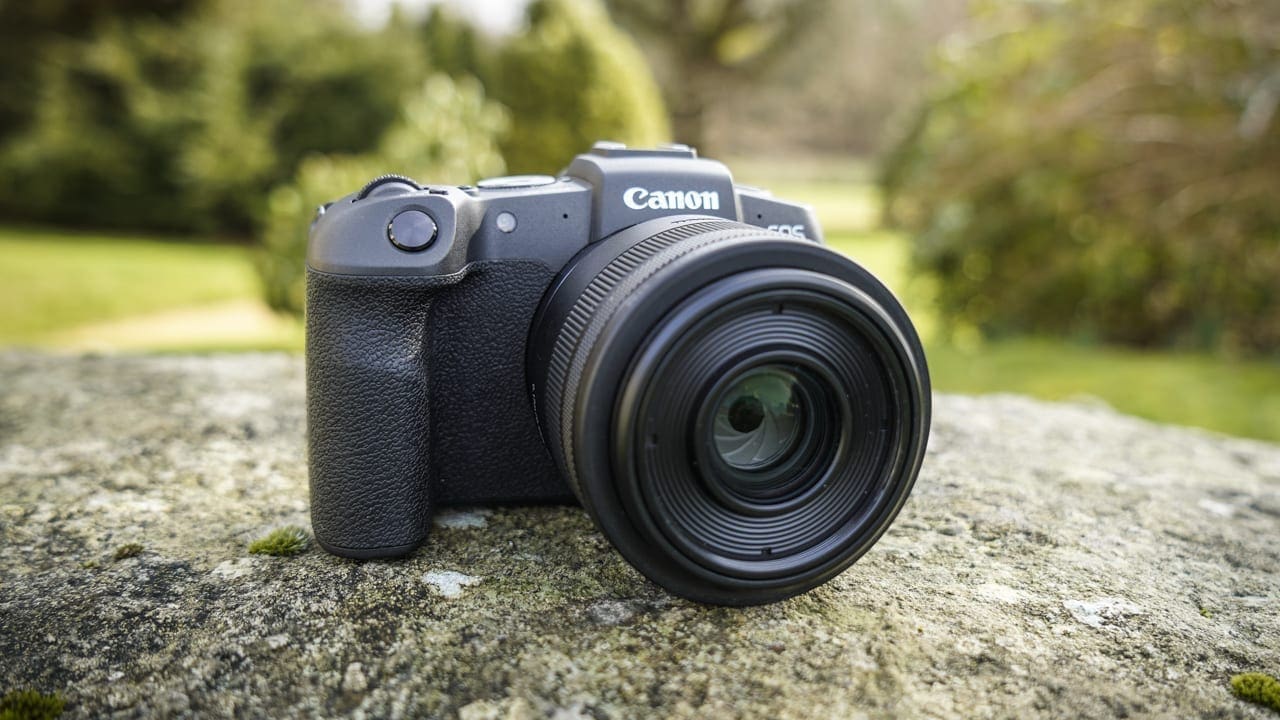
Specification
- Camera type: Mirrorless
- Announced: February 2019
- Lens mount: RF
- Sensor: 26.2Mp full-frame (35.9 x 24mm) CMOS
- Processing engine: Digic 8
- Autofocus system: Phase detection using Dual Pixel CMOS AF with 4,799 focus positions
- Sensitivity range: Stills: ISO 100-40000 expandable to ISO 50-102400, Video: 4K Auto: 100-12800, H2: 102400, Full HD/HD - Auto: 100-25600, H2:102400
- Maximum continuous shooting rate: 5fps until card full with Jpegs or 50 raw files or 4 fps with AF Tracking
- Key video specifications: 4K (3840 x 2160) at 25/23.98fps, Full HD (1920 x 1080) at 59.94/50/29.97/25fps)
- Viewfinder: 0.39-inch 2.36-million-dot OLED
- Screen: Vari-angle 3-inch Clear View LCD II touchscreen with 1.04 million dots
- Dimensions (WxHxD): 132.5 x 85.0 x 70.0mm
- Weight: 485g with memory card and battery
One of the cheapest full-frame cameras you can buy, the EOS RP is aimed travel and street photographers who will benefit from its big resolution in a small, versatile body.
Inside the Canon EOS RP, the 26.2MP Dual Pixel CMOS sensor is paired by Canon’s latest Digic 8 processing engine. Thanks to that sensor and processor combo, the Canon RP has a native sensitivity range of ISO 100-40,000.
It’s the RP’s AF system that is perhaps most impressive. Its Dual Pixel design means that every photoreceptor is split in two so they can all play a part in focusing. There are 4,779 user-selectable AF points which cover 88% of the width and 100% of the height of the frame.
Although it’s a full-frame camera, the Canon EOS RP weighs just 485g with the memory card and battery installed. This is great for street photographers who want a light kit to carry on their travels.
£1049
$999For
- Compact full-frame body
- Vari-angle touchscreen
- Attractively priced
Canon PowerShot G7 X Mark III
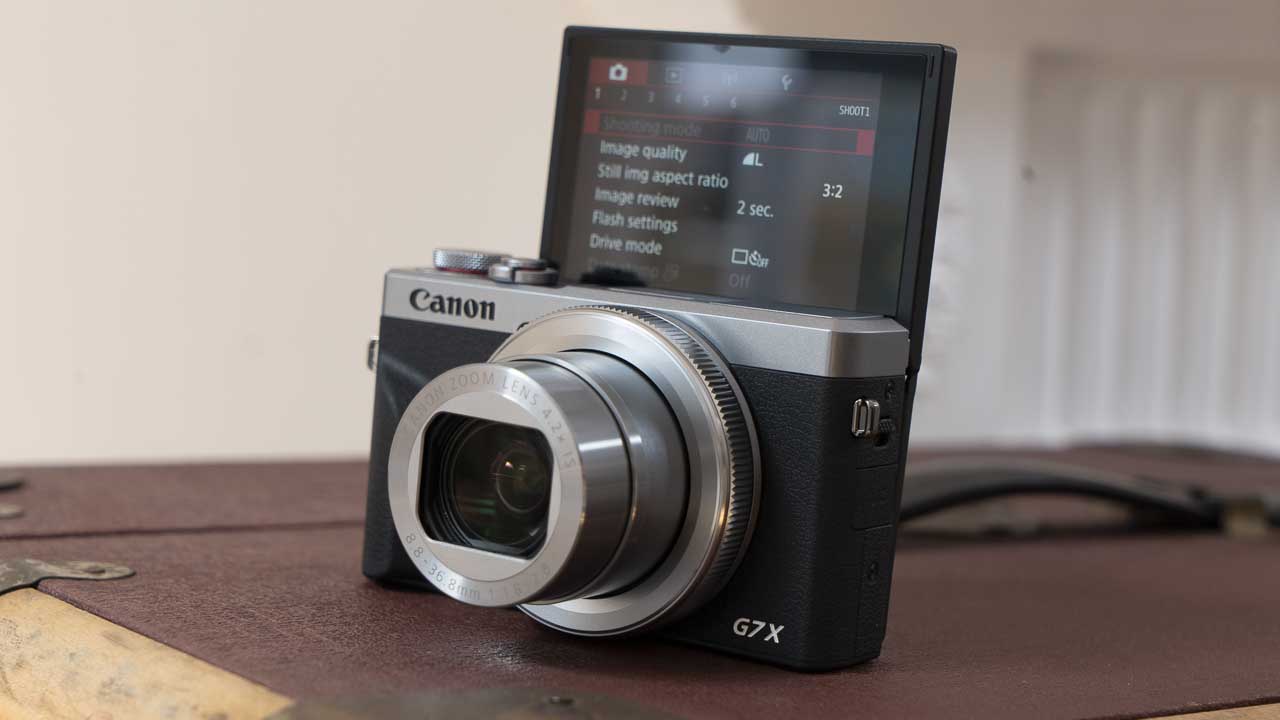
Specification
- Camera type: Compact
- Sensor: 20.1Mp 1-inch type Stacked CMOS
- Lens: 24-100mm (35mm equivalent) f/1.8 – f/2.8
- Viewfinder: 0.39-inch type 2,360,000-dot OLED
- Screen: 3-inch 1,040,000-dot tilting touchscreen
- Autofocus system: AiAF (31-point, Face Detection or Touch AF with Object and Face Select and Track), 1-point AF (any position or fixed centre)
- Sensitivity range: ISO 125-12,800 expandable to ISO 25,600
- Dimensions (W x H x D): 105.5 x 60.9 x 41.4mm
- Weight: 304g with battery and memory card
For street photographers who want to be ultra discreet and maybe capture a little video as well, the Canon PowerShot G7 X Mark III could be the best camera for you.
Like the PowerShot G5 X II announced at the same time, the PowerShot G7 X Mark III has a 20.1Mp 1-inch type stacked CMOS sensor. This is a new sensor design for Canon and combined with the Canon Digic 8 processing engine, it enables very fast continuous shooting rates.
On the front of the camera is a 8.8 – 36.8mm f/1.8-2.8 stabilised lens which has a 35mm focal length equivalence of 24 – 100mm. The rest of the body design is understated, yet mixed with a nice grip and intuitive control layout for quick shooting.
Overall, the PowerShot G7 X III is capable of producing very attractive images with an impressive level of detail.
£700
$699.99For
- Live-streaming possible
- No cropping in 4K video mode
- Excellent blend of touch and button/dial control
Best Micro Four Thirds cameras for street photography
Panasonic and Olympus (now known as the OM System) make some of the best cameras for street photographers in terms of value for money. Small, lightweight, great image quality, and often these are cameras with IBIS at a reasonable cost. These are our favourites.
Olympus OM-D E-M5 Mark III
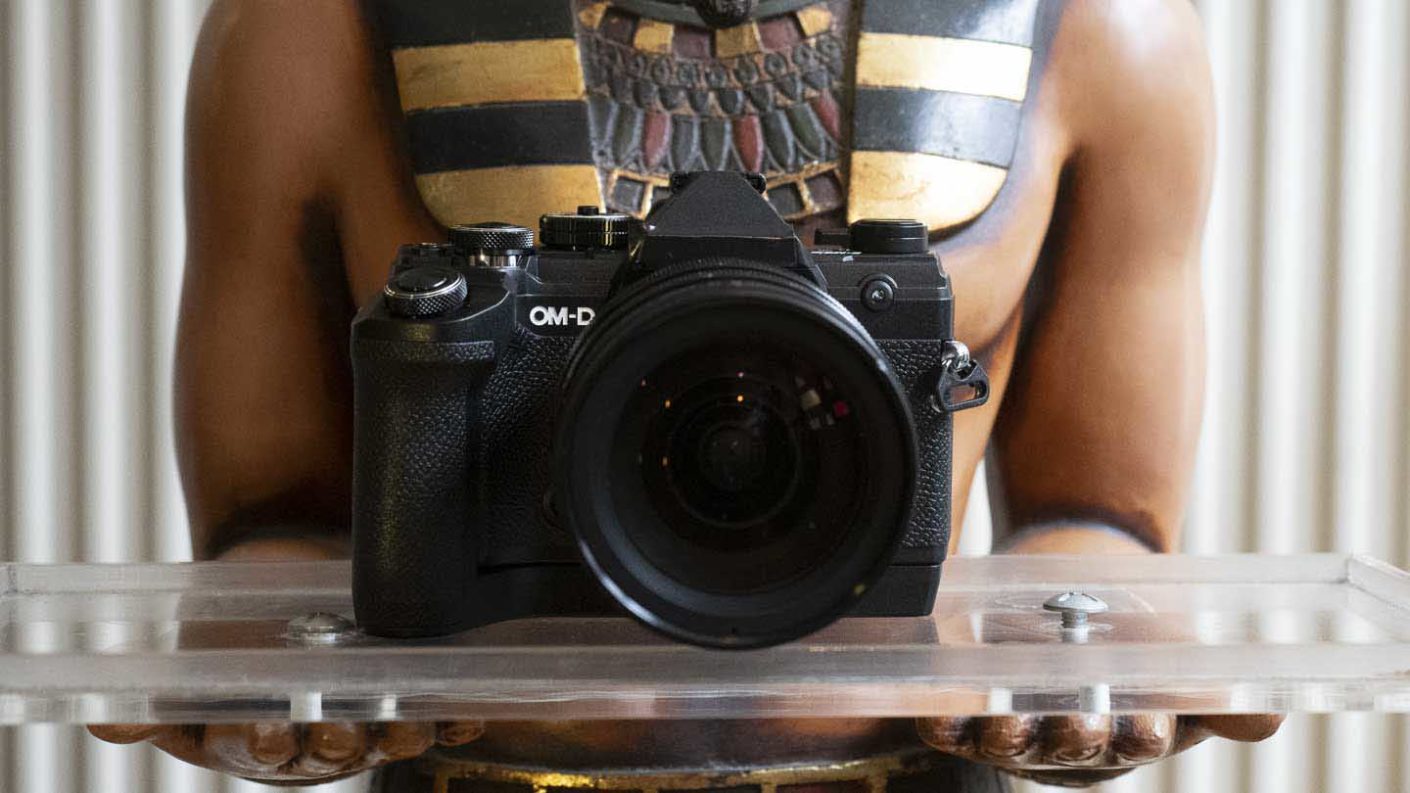
Specification
- Camera type: Mirrorless camera
- Sensor: 20.4Mp Live MOS Micro Four Thirds sensor
- Lens mount: Micro Four Thirds
- Processing engine: TruePic VIII
- Sensitivity range: ISO 64-25,600
- Autofocus system: Hybrid with 121 (all cross-type) phase-detection AF points
- Maximum continuous shooting rate: Mechanical shutter: 10fps with focus and exposure fixed at the start of the burst, 6fps with C-AF, Electronic Shutter 30fps and 10fps
- Max video resolution: C4K 24p at up to 237Mbps / 4K 30p, 25p, 24p at 102Mbps
- Live Bulb Shooting Options: Live Composite, Live Time, Live Bulb, Focus Bracketing, Focus Stacking, 50Mp High Res Shot modes
- Viewfinder: 2,360,000-dot electronic viewfinder
- Screen: Vari‑angle 3.0-inch 1,037,000-dot touchscreen
- Dimensions (W x H x D): 125.3 x 85.2 x 9.7mm
- Weight: 414g including battery and memory card, 366g body only
The Olympus OM-D E-M5 Mark III sits below the OM-D E-M1 Mark III in Olympus’s interchangeable lens camera lineup. It has a smaller body, which makes it a great choice for travel. It also produces nice images and the stabilisation system is incredible, enabling you to hand-hold the camera and get sharp images with exposures measured in whole seconds. In addition, it does a good job with video; although if you’re really serious about shooting moving images you might want to look at the Panasonic Lumix G90 which has a true Log mode.
Olympus has given the E-M5 Mark III the same 20.4Mp Live MOS sensor as the OM-D E-M1 Mark II. The processor is also listed as the same TruePic VIII engine, but Olympus tells us it’s been updated for a bit more oomph.
Like the OM-D E-M1 II, the OM-D E-M5 III has a 121-point (all cross-type) phase-detection autofocus (AF) system. There are also clever shooting options such as Live Composite, Live Time, Live Bulb, Focus Bracketing, Focus Stacking and a 50Mp High Res Shot mode.
As with its predecessor, the OM-D E-M5 II, the High-Res Shot mode is a tripod-only option. When this mode is activated, the E-M5 III shifts the imaging sensor by 0.5-pixel movements between 8 shots. These are then merged into one image that’s equivalent to 50Mp.
Olympus has upgraded the video capability of the OM-D E-M5 Mark III in comparison with the Mark II model. The new camera is capable of shooting C4K 24p video at up to 237Mbps or 4K 30p, 25p, 24p video at 30p 102Mbps.
What’s more, Full-HD video can be shot at up to 120p for slow-motion playback.
Read our buyer’s guide to the best Olympus cameras
£1100
$1199.99For
- Images full of detail
- Low noise at higher ISOs
- Superb stabilisation
Panasonic Lumix GX9
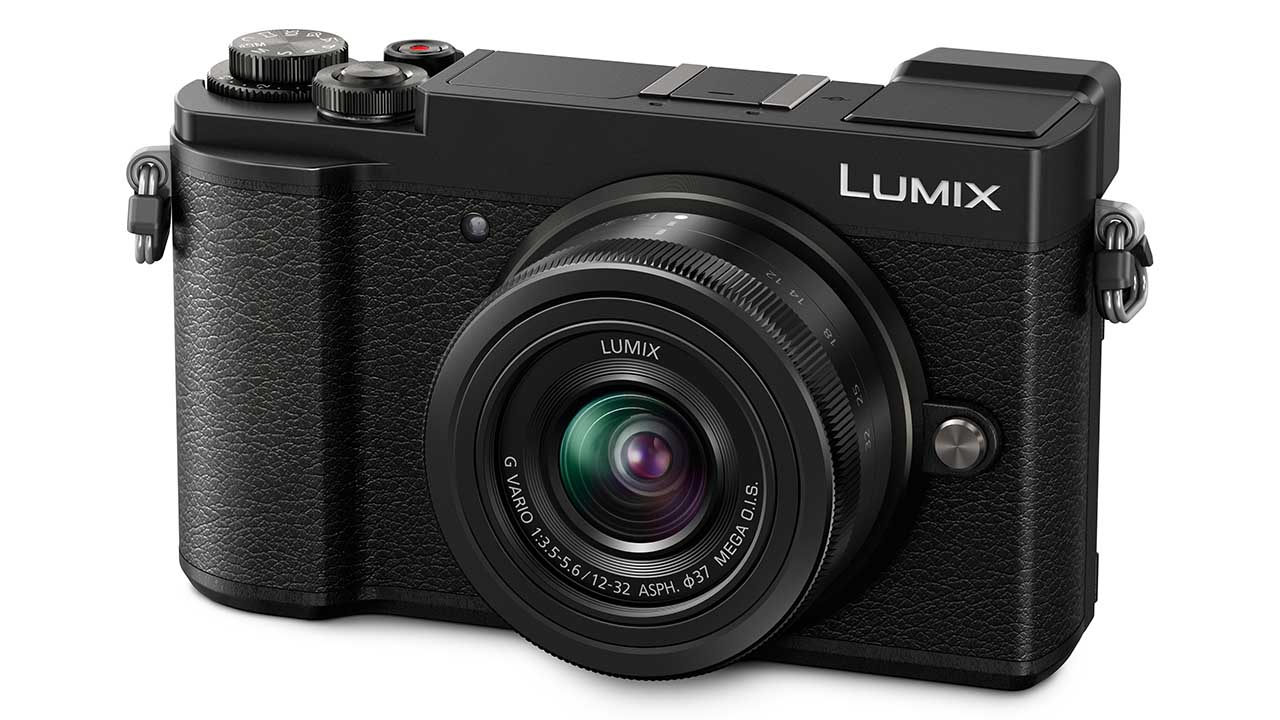
Specification
- Sensor: 20.3-megapixel Micro Four Thirds
- Stabilisation: Sensor-Shift, 5-Axis
- Sensitivity: 200 to 25600 (Extended: 100 to 25600)
- Video: UHD 4K (3840 x 2160) at 24.00p/29.97p [100 Mb/s]
- Viewfinder: 2,760,000-dot EVF
- Monitor: 3-inch 1,240,000-dot tilting touchscreen
Panasonic introduced the GX9 to sit in the middle of its range as a “premium street photography camera”. With its small body size and flat rangefinder type design, it’s also ideally suited as a travel camera – especially if you already own another Micro Four Thirds camera.
It houses a 20.3 megapixel Four Thirds sensor, without an anti-aliasing filter for increased detail resolution.
It has a host of other appealing specifications, including a high-resolution tilting viewfinder, a tilting touch-sensitive LCD screen, 4K Photo and Video modes, and compatibility with the huge range of Micro Four Thirds lenses.
The look of the camera is also very stylish, without attracting too much attention when using it out and about, which is ideal. There’s a good mixture of buttons and dials on the camera, while the tilting screen is very handy for composing from awkward angles – I’m personally not too bothered about articulation for a camera like this (others may feel differently).
Overall image quality is very good, particularly in good or bright light. In lower light, watch out for a little loss of detail in places, and try to stick to as wide an aperture as possible. Colours are nicely reproduced, being natural while also vibrant, while focusing is generally quick and accurate.
£599
$997For
- Small and lightweight
- Nice colours
- Tilting screen is great for shooting at odd angles
Panasonic G9
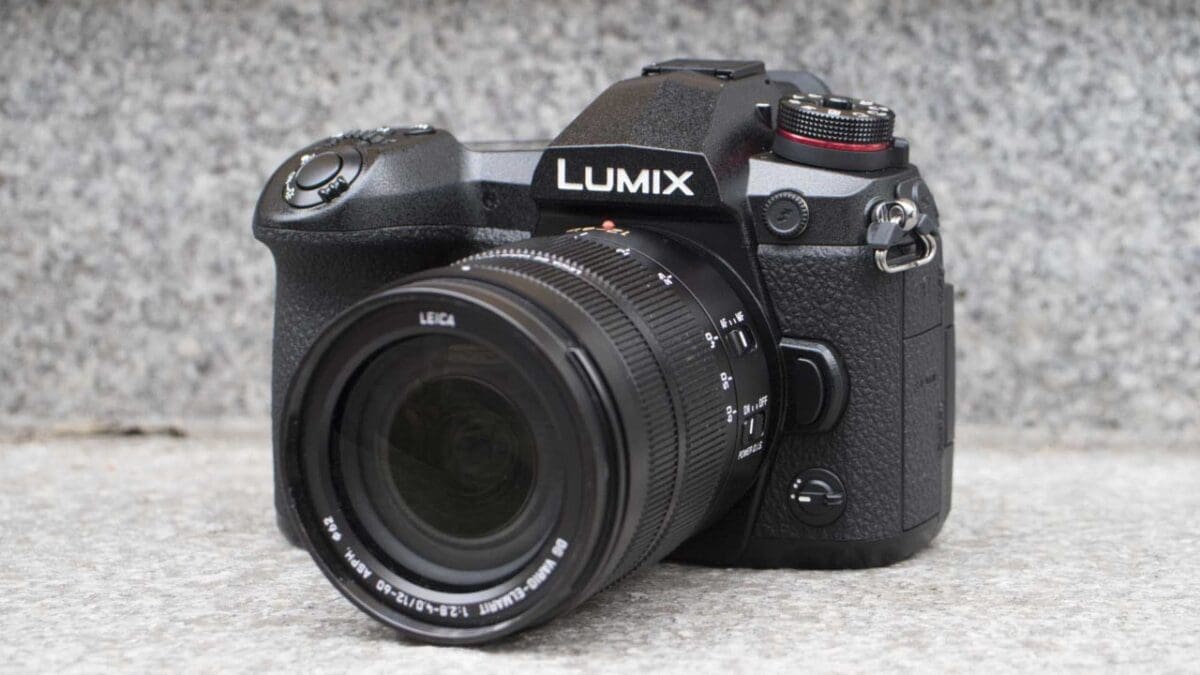
Specification
- Burst Mode (electronic shutter): 20fps with C-AF
- Burst Mode (electronic shutter): 60fps with S-AF
- Burst Mode (mechanical shutter): 9fps with C-AF
- Burst Mode (mechanical shutter): 12fps with S-AF
We’ve seen an escalation in continuous shooting rates recently with electronic shutters also allowing silent shooting. When the electronic shutter is in use, the G9 can shoot at up to 20fps (frames per second) with continuous autofocusing (AFC), that puts it level with the full-frame Sony A9. That’s good news for wildlife photographers who don’t want a clicking shutter to disturb their prey.
If you want to shoot faster still, the G9 can shoot full-resolution images at an incredible 60fps in single-AF mode, that is, with the focus set at the start of the sequence. That’s good news for shooting static action like water splashes or fleeting facial expressions.
At full-pelt, the G9’s buffer enables up to 50 raw files to be captured. If you switch to use the mechanical shutter, the maximum shooting rates drop to 9fps with AFC and 12fps with AFS, but the burst depth expands to 60 raw files.
In addition, Panasonic’s 4K Photo and 6K Photo modes are on hand with their convenient modes to help with capturing brief bursts of action. These modes use video technology to capture sequences of images which can then be extracted to create 8Mp (4K) or 18Mp (6K) still images.
The G9 can shoot 6K Photo images at 30fps for up to 10minutes. Alternatively, 4K Photo mode can be used at 60fps for 10 minutes or 30fps for a maximum of 30 minutes. Shooting for 10 minutes at 60fps produces a lot of 8Mp images!
£1499
For
- As fast as the Sony A9
- Excellent buffer
- Superb EVF and screen
- Stabilisation system rated at 6.5EV
- Weather-sealed
Best Sony cameras for street photography
Sony has perhaps pushed the envelope with AF performance more than any brand, and its range, from the A7 series cameras on down to its versatile RX series offers plenty of great options for street photographers.
Sony A6600
Specification
- Camera type: Mirrorless
- Announced: 28th August 2019
- Lens mount: Sony E
- Sensor: 24.2MP APS-C Exmor CMOS (23.5 x 15.6mm) sensor
- Video: 4K (3840 x 2160) 25/30p video capture with log profiles
- Continuous shooting rate: Hi+: 11fps, Hi: 8fps, Mid: 6fps, Lo: 3fps
- Burst depth: In Hi+ 46 raw files, 99 Extra Fine Jpegs or 44 raw and Jpeg files
- Stabilisation: 5-axis in-body image stabilisation
- Sensitivity: ISO 100-32000 (expandable to ISO 50 – 102400)
- Autofocus : Fast Hybrid AF (phase-detection and contrast-detection each with 425 points), Face Detection and Real-Time Eye AF
- Viewfinder: 0.39-inch 2,359,296-dot OLED electronic viewfinder
- Screen: 3-inch 921,600-dot tilting touchscreen
- Storage: SD/SDHC/SDXC UHS-I or Memory Stick PRO Duo, Memory Stick PRO-HG Duo, Memory Stick Micro (M2)
- Dimensions (W x H x D): 120.0 x 66.9 x 69.3mm / 4 3/4 x 2 3/4 x 2 3/4-inches
- Weight: 503g / 1lb 1.8oz with battery and memory card
The Sony A6600 is Sony’s flagship APS-C format mirrorless camera and it’s aimed at enthusiast photographers and videographers who want to shoot in a variety of conditions. It features a 24.2MP Exmor CMOS image sensor, the BIONZ X image processor and a front-end LSI as is implemented in Sony’s full-frame cameras for better enhancements in still and video image quality.
Among the A6600’s impressive feature set is Sony’s innovative 5-axis in-body image stabilisation system that provides a 5.0-step shutter speed advantage.
The Alpha 6600 also delivers an autofocus acquisition time of just 0.02 seconds, with 425 phase-detection AF points covering approximately 84% of the image area and 425 contrast-detection AF points.
Also on-board is Sony’s ‘Real-time Tracking’ and ‘Real-time Eye AF’, the latest version of Sony’s Eye AF technology, which employs AI-based object recognition to detect and process eye data in real-time.
Real-time Eye AF promises improved accuracy, speed and tracking performance of Eye AF for both humans and animals, and allows the photographer to concentrate exclusively on composition. It’s a significant bonus for pet and portrait photography.
High-resolution internal 4K movie recording with full-pixel readout without pixel binning in Super 35mm format is also on-board. You’ll also find built-in interval shooting for time-lapse videos and a 180-degree tiltable, 3.0-type 921k-dot (approx.) LCD touch screen.
It may not have the same shape as the Sony A7 series of full-frame cameras, but the A 6600 has much of the same technology, enabling it to deliver impressive results with a wide range of subjects.
£1450
€1600For
- Very good image and video quality
- Fast, accurate AF system
- Excellent battery life (800+ shots)
Sony A7 III
Specification
- Announced: 26th February 2018
- Camera type: Full-frame mirrorless
- Sensor: 24.2Mp Full frame (35.6×23.8mm), Exmor R CMOS sensor
- Processor: Bionz X
- Lens mount: Sony E
- Sensitivity range: Stills: ISO 100-51,200, expandable to 50-204,800, Video: ISO 100-51,200, expandable to 100-102,400
- Maximum continuous shooting rate: 10fps with full AF and metering
- Maximum video resolution: 4K (3840 x 2160)
- Autofocus system: Hybrid with 693 phase detection points and 425 contrast detection points
- Viewfinder: 0.5-inch OLED with 2,359,296 dots
- Screen: 3-inch 921,600-dot tilting touchscreen
- Storage: Dual Slot, Slot 1: SD (UHS-I/II), Slot 2: Multi slot for Memory Stick Duo/SD (UHS-I)
- Dimensions (W x H x D): 126.9 x 95.6 x 73.7mm
- Weight: 650g
The Sony A7 III is the ‘all-rounder’ in the third generation of Sony A7-series of full-frame cameras. It’s aimed at enthusiast photographers but it has features that will also keep many professional photographers happy. It also has a good collection of video specifications (including S-Log3 gamma and clean HDMI output), which means it can be used for professional shoots as well as for fun.
While the A7 III doesn’t have exactly the same autofocus system as the Sony A9, that requires the same sensor, it has the same number of autofocus points: 69 phase-detection points and 425 contrast AF points.
These points cover 93% of the imaging area. This makes it easier than with the A7 II to track moving subjects. In addition, the system is sensitive down to -3EV, which means it should be effective in low light.
There’s also Sony’s Eye AF mode that helps you target the most important part of a portrait subject.
In addition to its excellent autofocus performance, the Sony A7 III is capable of capturing a wide range of tones and images have plenty of detail while noise is controlled well throughout the native sensitivity (ISO) range.
Find the latest deals on the Sony A7 III at Amazon UK and Amazon US.
£1699
$1999For
- Good-quality 24Mp full-frame sensor
- Excellent autofocus system
- Attractively priced in the full-frame market
Sony RX100 VII
Specification
- Camera type: Compact
- Sensor: 20.1Mp 1-inch type (13.2mm x 8.8mm) Exmor RS CMOS
- Lens: ZEISS Vario-Sonnar T* 9-72mmm (24-200mm equivalent) f/2.8-4.5
- Autofocus: 357 focal-plane phase-detection and 425 contrast-detection AF points
- Burst Mode: 90fps in JPEG or Raw format in Single Burst Shooting mode
- Video: 4K in-body movie recording with full pixel readout
- Viewfinder: 0.39-inch 2,359,296-dot OLED (pop-up)
- Screen: Tilting 3-inch 921,600-dot TFT touchscreen (up 180-degrees, down 90-degrees)
- Storage: SD/SDHC/SDXC
- Dimensions (WxHxD): 101.6 x 58.1 x 42.8 mm / 4 x 2 3/8 x 1 11/16-inch
- Weight: 302g / 10.7oz with battery and SD card or 275g / 9.8oz body only
Promising ‘A9-level’ AF performance as well as 90fps single burst shooting, the RX100 VII turned a lot of heads when it was announced and reinforced Sony’s reputation as a true innovator in the market.
Inside the RX100 VII is a 1-inch, stacked 20.1-megapixel Exmor RS CMOS sensor with a DRAM chip and Sony’s Bionz X image processor. On the outside is a ZEISS Vario-Sonnar T* 24-200mmviii F2.8-4.5.
What should really get people excited, though, is the technology the RX100 VII inherits from Sony’s A9. Like the A9, the RX100 VII’s image sensor realises blackout-free shooting for a completely live view, even when continuous shooting at 20fps.
The RX100 VII also promises ‘A9-level’ AF/AE tracking performance during continuous shooting, meaning the camera performs AF/AE calculations up to 60 times per second and captures fast-moving action at 20fps with AF/AE tracking.
Sony’s Real-time Eye AF and Real-time Tracking modes also make their debut for the first time in a compact camera. With 357 focal-plane phase-detection AF points and 425 contrast-detection AF points, its AF system is among the best you will find in a camera this small.
The Sony RX100 VII also debuted a new Single Burst Shooting mode, which captures a high-speed shot at up to 90fps in JPEG or Raw format using the anti-distortion shutter. Sony describes the mode as enabling photographers to frame fast-moving action and shoot as if capturing a single frame, but the RX100 VII will deliver seven frames, taken at 90fps, 60fps or 30fps.
Aimed at vloggers, the Sony RX100 VII also brings some solid movie-making credentials, such as 4K in-body movie recording with full pixel readout and no pixel binning in high bit rate XAVCS, Real-time Tracking and Real-time Eye AF for video and a microphone input.
£1200
$1198 / €1300For
- Best-in-its-class AF system
- Stabilised 4K video
- Great focal length range

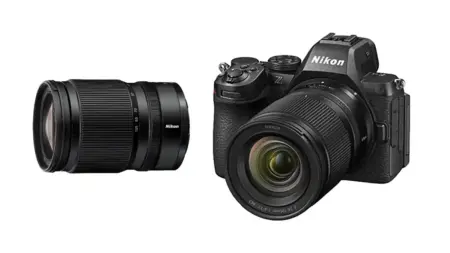
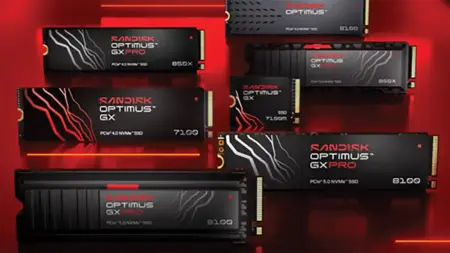
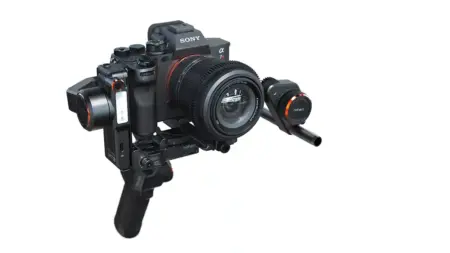
Leave a Reply
You must be logged in to post a comment.